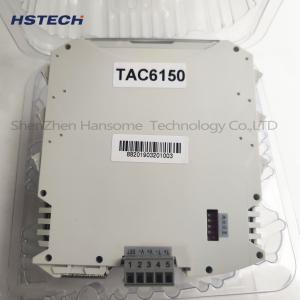
Add to Cart
Wave Soldering Temperature Control Module PLC Engineering Temperature Controller Nitong Reflow Soldering Accessories
Introduction:
A plc temperature control module is a device used to monitor and control temperature. It is usually used with a programmable logic controller (PLC).
process:
1. Sensor selection: First, select a temperature sensor suitable for the application scenario. Commonly used temperature sensors include thermocouples, thermal resistors and semiconductor sensors. These sensors can convert temperature into electrical signals and send them to the temperature control module for processing.
2. Connect the sensor: Connect the selected temperature sensor to the PLC temperature control module. This usually involves connecting the sensor's output pin to the module's input port. Ensure proper wiring according to sensor and module specifications and requirements.
3. Set input parameters: Configure input parameters in the PLC program so that the module can read the temperature signal sent by the sensor. This may include the input port and type (analog or digital), as well as the bias for calibrating or adjusting the sensor.
4. Data collection: Read connected sensors regularly and obtain temperature data. These data will be entered into variables in the PLC program so that subsequent temperature control algorithms can be used.
5. Temperature control algorithm: Implement the temperature control algorithm in the PLC program. These algorithms decide how to adjust the temperature based on the temperature data being read and the target temperature being set. Common control algorithms include proportional-integral-deriva
6. Control output: According to the results of the control algorithm, the PLC will generate a control signal and connect it to the temperature control device (such as a heater or cooler) through the output port. In this way, the control signal will trigger the corresponding operation to achieve the desired temperature regulation
Product Series:
| Controller series: | PEC8150PEC8000 PEC7000 DIO3000 DIO2000 |
| Temperature control module series | A I05150 AIO5000 TAC6150 TAC6000 |
Images:



